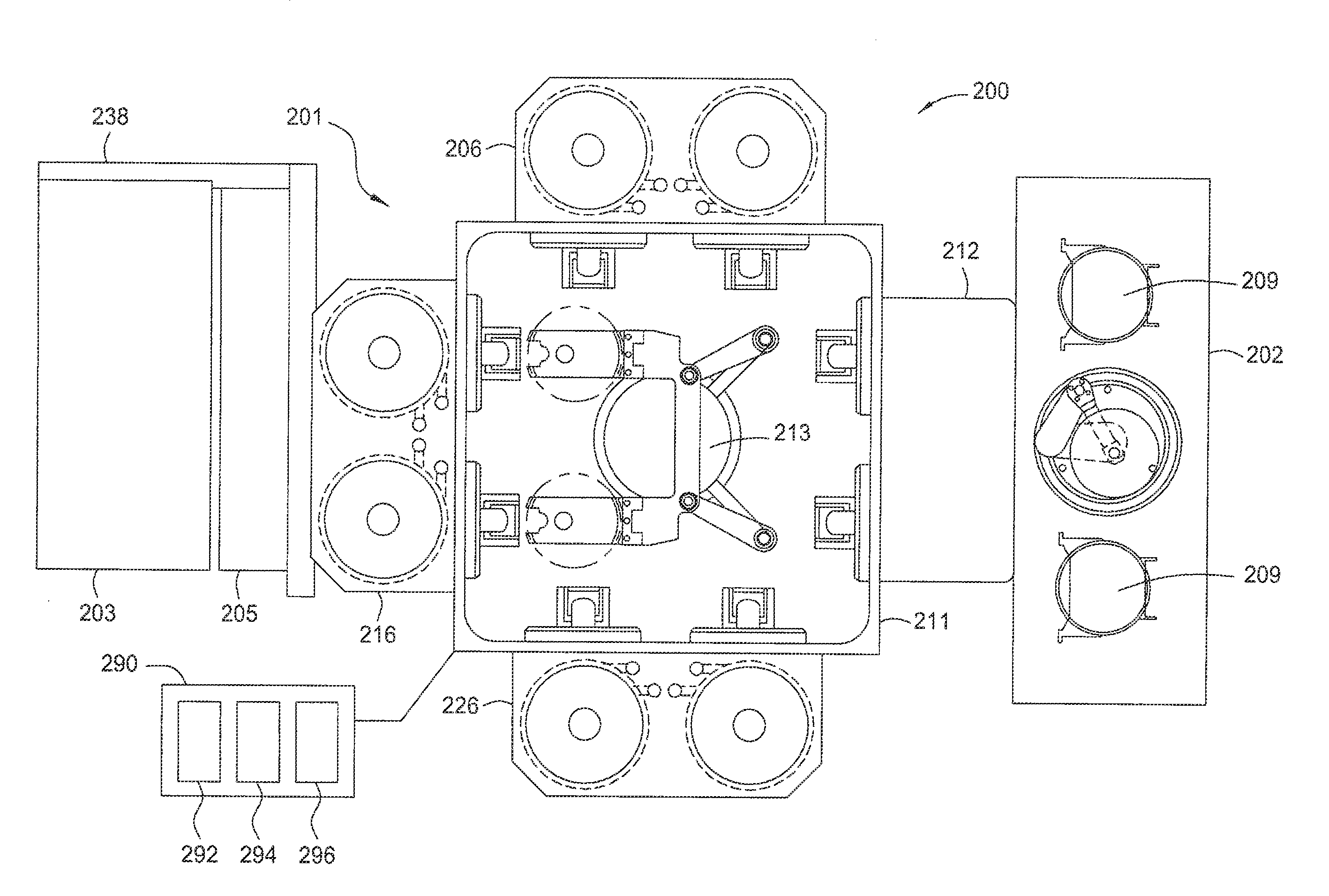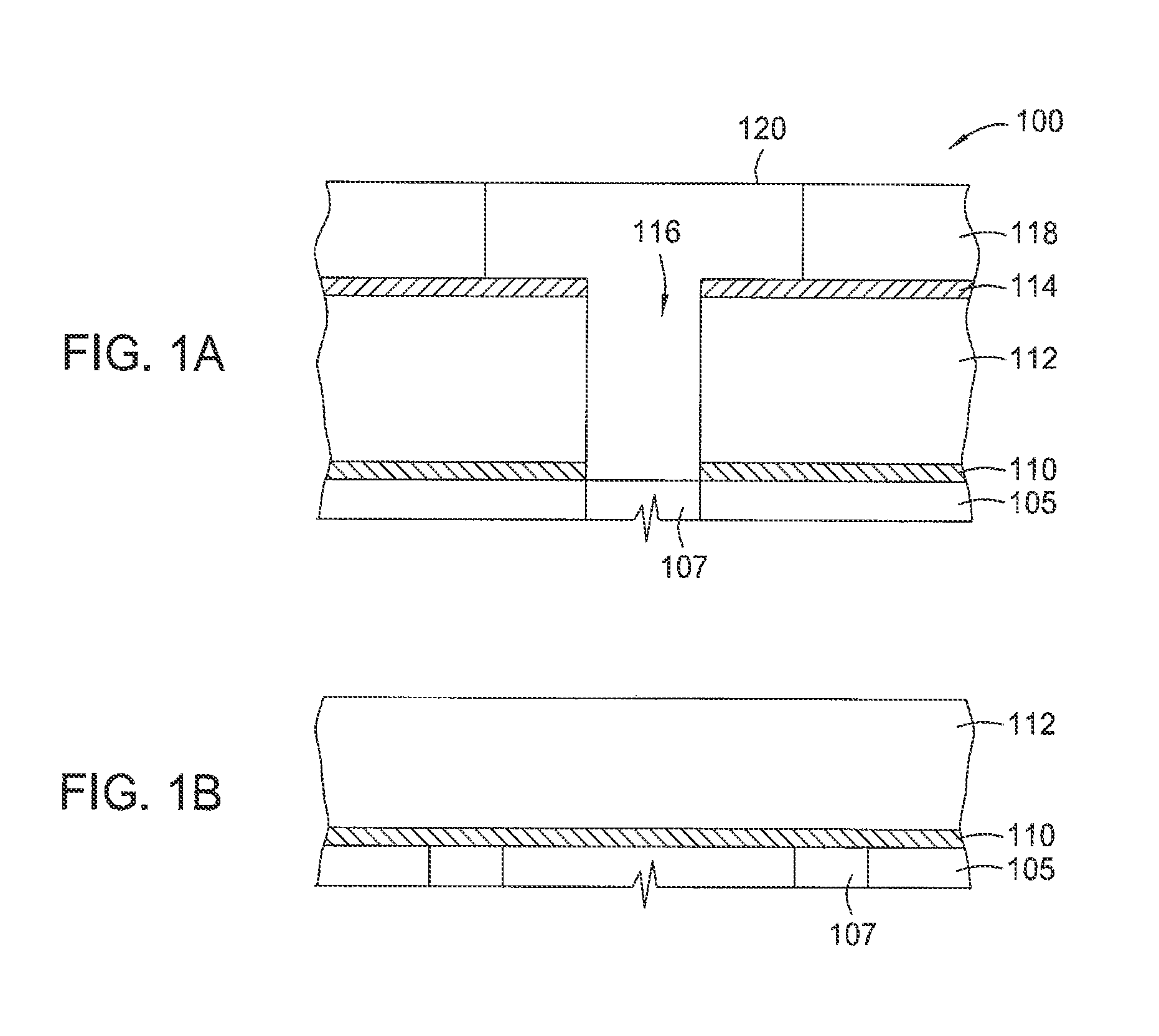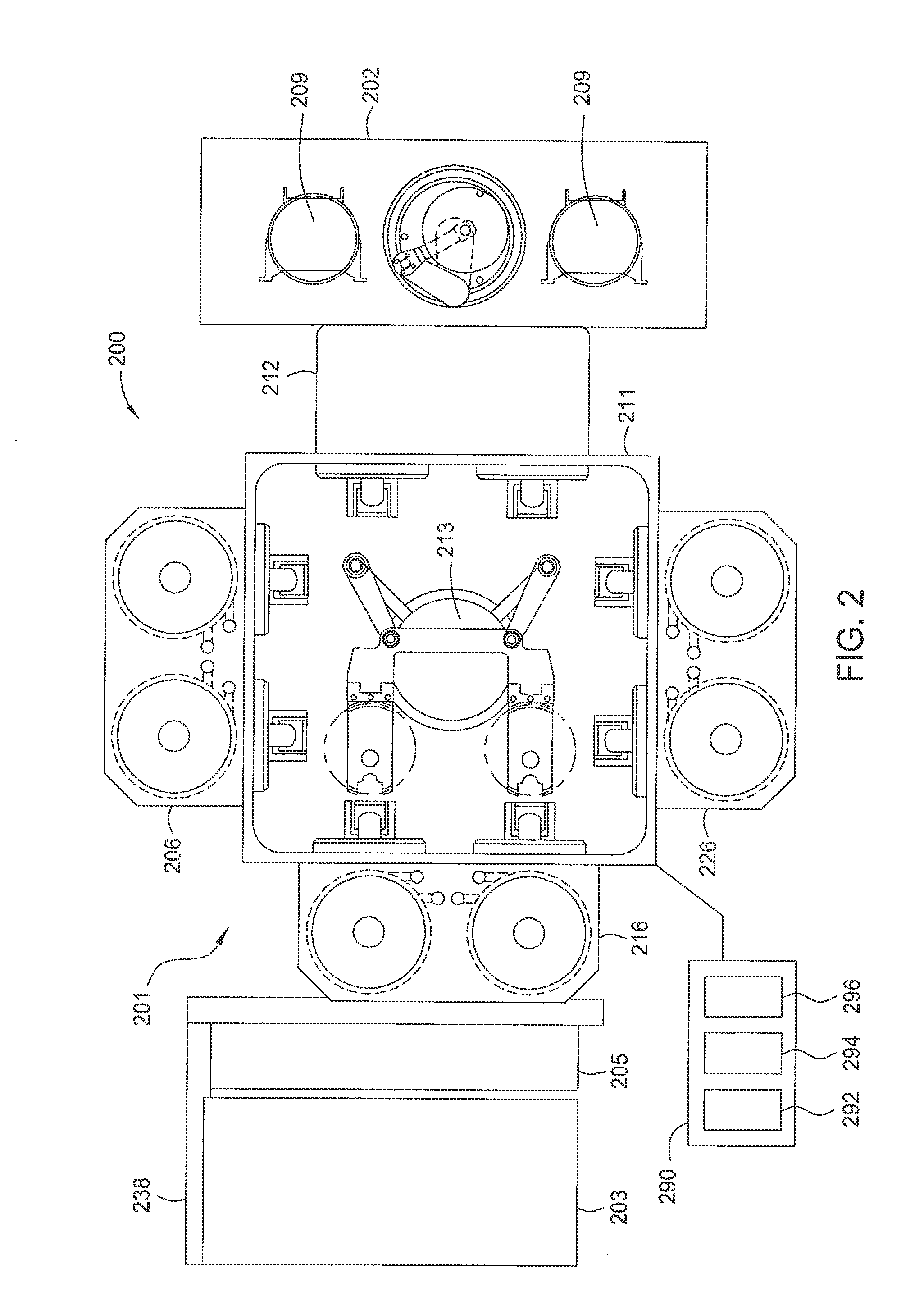Low-k dielectric layer with reduced dielectric constant and strengthened mechanical properties
a dielectric layer and low-k technology, applied in the field of low-k dielectric layers on substrates, can solve the problems of reducing the diffusion rate of porogens from the deposited layer, and reducing the mechanical strength of films, so as to improve mechanical properties, improve dielectric properties, and reduce the effect of k
- Summary
- Abstract
- Description
- Claims
- Application Information
AI Technical Summary
Benefits of technology
Problems solved by technology
Method used
Image
Examples
Embodiment Construction
[0029]The present disclosure generally provides methods for forming a low-k dielectric layer within an integrated circuit (IC) device. However, it should be understood that the embodiments disclosed herein may have utility in system configurations other than those shown in the illustrative examples of the disclosure, and that these embodiments may also find applications which are not related to IC's, for example, micro-electro-mechanical systems (MEMS), displays and solar panels. Examples provided herein generally describe chemical vapor depositing and treating of low-k silicon-carbon oxide films, but the treating processes described herein can also be applied to porous low-k dielectric layers comprising other materials or produced by alternate means, such as spin-on glass (SOG).
[0030]An example of a damascene structure which can be formed using the low-k layers described herein is shown in FIGS. 1A and 1B. A dielectric barrier layer 110 is formed on the substrate surface to elimina...
PUM
| Property | Measurement | Unit |
|---|---|---|
| Power | aaaaa | aaaaa |
| Power | aaaaa | aaaaa |
| Mechanical properties | aaaaa | aaaaa |
Abstract
Description
Claims
Application Information
 Login to View More
Login to View More - R&D
- Intellectual Property
- Life Sciences
- Materials
- Tech Scout
- Unparalleled Data Quality
- Higher Quality Content
- 60% Fewer Hallucinations
Browse by: Latest US Patents, China's latest patents, Technical Efficacy Thesaurus, Application Domain, Technology Topic, Popular Technical Reports.
© 2025 PatSnap. All rights reserved.Legal|Privacy policy|Modern Slavery Act Transparency Statement|Sitemap|About US| Contact US: help@patsnap.com



